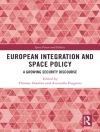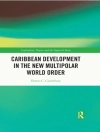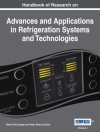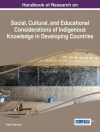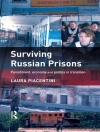9/11. Tornadoes. Emergency preparedness. Whether explaining parts per million to a community exposed to contaminated groundwater or launching a campaign to encourage home carbon monoxide testing, an effective message is paramount to the desired result: an increased understanding of health risk.
How people interpret and respond to risk messages related to potential immediate or long-term environmental danger is largely influenced by such factors as age, ethnicity, community, and proximity to the health risk in question. Communicating Environmental Risk in Multiethnic Communities is the first book to address the theory and practice of disseminating disaster warnings and hazard education messages to multiethnic communities. Authors Michael K. Lindell and Ronald W. Perry introduce theory-based reasoning as a basis for understanding warning dissemination and public education, devoting specific attention to the community context of emergency warning delivery and response. Through these principles of human behavior, readers can apply risk communication information to virtually any specific disaster agent with which they may be concerned.
The authors review a variety of theories of emergency decision-making and develop a Protective Action Decision Model (PADM) as the foundation for understanding citizen response to both emergency and educational communications. Combining risk theory with practical application, Communicating Environmental Risk in Multiethnic Communities examines the research literature and identifies the important factors that affect people′s decisions to comply with warnings. The authors present a review of a range of public education campaigns for different types of hazards.
This volume is recommended for practitioners in private emergency management and federal, state, and local governments, as well as students studying risk communication, health communication, emergency management, and environmental policy and management.
Table des matières
1. Risk Communication, Culture, and Ethnicity
Risk Communication in Environmental Hazard Management
Risk Communication, Ethnicity, and Culture
2. Theoretical Bases of Risk Communication
Social Influence
Theories of Behavioral Evaluation and Choice
Theories That Integrate Social and Cognitive Processes
The Protective Action Decision Model
3. Disaster Warnings as Risk Communication
Protective Action Decisions
Situational Influences on Disaster Response
Warning Compliance and Spontaneous Response
Warning Multiethnic Communities
4. Hazard Awareness as Risk Communication
Household Hazard Adjustment Decisions
Situtational Influences on Hazard Adjustment
5. Approaches to Influencing Hazard Adjustment Adoption
The Context of Evnironmental Risk Communication
Risk Communication During the Continuing Hazard Phase
Risk Communication During an Escalating Crisis or Emergency Response
References
Index
About the Authors
A propos de l’auteur
Ronald W. Perry earned the Ph.D. in Sociology at the University of Washington in 1975. He specializes in emergency management and disaster research and worked for a National Laboratory (Battelle Institute) prior to his 1983 appointment as Professor of Public Affairs at Arizona State University. He has published twenty books on different aspects of emergency preparedness and comprehensive emergency management and more than 125 referred journal articles.
Dr. Perry’s public service includes appointment to three National Academy of Sciences Committees (United States Emergency Preparedness, Technology in Emergency Management and Natural Disasters). He was a pro bono consultant to the President’s Commission on the Reactor Accident at Three Mile Island. In Arizona, he was an original appointee to the Governor’s Terrorism Task Force and still serves on the Arizona Council for Earthquake Safety. Locally, Dr. Perry serves on the Steering Committees for the Phoenix Urban Area Security Initiative, the Phoenix Metropolitan Medical Response System, the Phoenix Fire Department Community Emergency Response Team, the Phoenix Fire Department Hazardous Incident Response Team and the Arizona Task Force I: Urban Search and Rescue Team.
He holds the “Award for Excellence in Emergency Management” from the Arizona Emergency Services Association and the “Award for Outstanding Environmental Achievement” from the U.S. Environmental Protection Agency. The Phoenix Fire Department selected him in 2003 to receive the Pearce Memorial Award for Contributions to the Hazardous Incident Response Team.


